Relax on a Douro River Cruise: Visiting Portugal
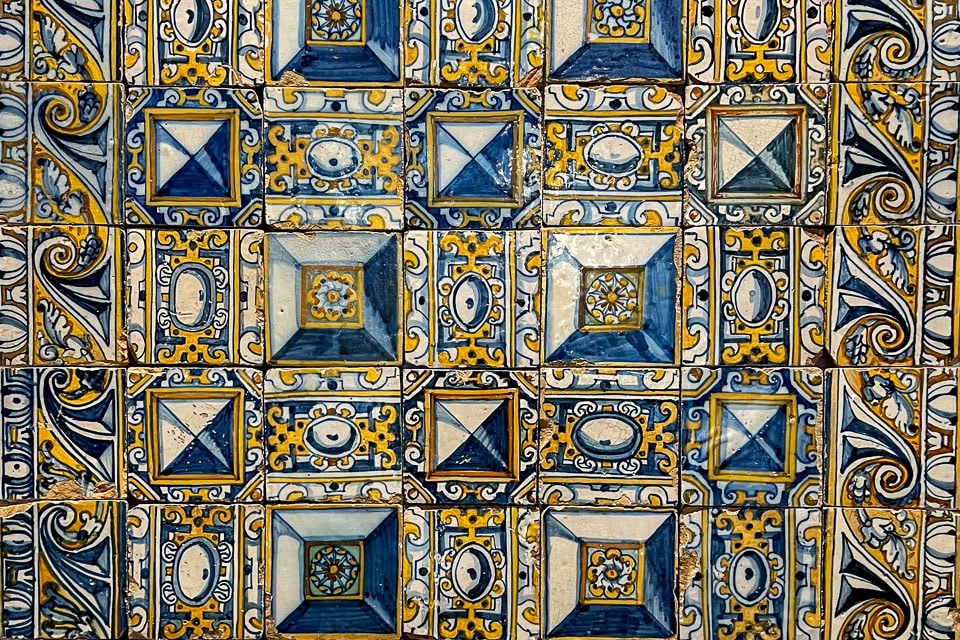
A Douro River cruise in Portugal is unique among European cruises. Given the surging interest in travel to Portugal, particularly to popular cities of Lisbon and Porto, we’ve been getting lots of inquiries about sailing the Douro River and visiting Portugal’s interior and this historic river valley region.
Before you go, take a minute to consider the appeal of Portugal’s Douro River Valley and what makes this river cruise a bit different from other European river trips. We traveled the Douro River with Viking’s “River of Gold” sailing in December 2023. The cruise runs from Porto, Portugal, to the Spanish border, through the heart of Portugal, with additional days in Lisbon to start and Porto to finish.
The Douro River is the only river navigable by cruise ships on the Iberian Peninsula. It starts in northwest Spain, east of Zamora in the Castille and Leon region, and flows west to the Atlantic Ocean, covering just over 550 miles. About 70 of those miles describe the border between Portugal and Spain.
Some posts on Travel Past 50 may contain affiliate links. If you buy something through one of those links, we may earn a small commission. As an Amazon associate, we earn from qualifying purchases.
Table of Contents
The Historic Douro River
Historically the river’s been known for its narrow and deep gorge sections, for wild rapids, and for the flat-bottom rabelo boats which transported barrels of port wine from the Douro Valley estates down to the city of Porto – or, actually, to Vila Nova de Gaia, the old town on the opposite bank of the Douro from Porto.
The Douro Valley’s famous port wine is one of the world’s first named wine appellation, dating back to 1756, and the productive valley has been designated a UNESCO World Heritage Site. Slate and marble mountains protect the valley from the Atlantic Ocean winds and contribute to the distinct wines. (In Spain, the excellent Ribera del Duero wines come from the upper reaches of the river, called Duero in Spanish and Douro in Portugese.)
In addition to its notable wine history, the Douro River Valley is the site of prehistoric settlements, signs of which have been discovered from numerous pictographs found in the Coa Valley confluence with the Douro. (See more below.)
Since the 1960s and 1970s, the Douro has been tamed by the building of locks and dams. The Portugal portion alone now has five locks, the highest of which, Carrapatelo Dam, has a maximum lift of 115 feet (35 meters).
The fun of sailing the Douro River may be similar to other European river cruises: experiencing the relaxation of river travel, enjoying unique landscapes and natural river sights, stopping for historic cultural and city visits, with fine dining along the way. Read on to find out about some of the unique factors involved in sailing the Douro River.
Sailing the Douro
What is unique about sailing the Douro River? For starters, the narrow river and locks require smaller ships than used on other Europe rivers. Viking has four ships built for the Douro “River of Gold” cruises. Experienced Viking passengers will notice slightly smaller cabins, dining room and lounge areas. Viking’s Douro ships have a capacity of only 106 guests and 33 crew.
Along the Douro, guests will find fewer city ports than on other European rivers. Besides the pre-sailing days in Lisbon, and the finish in Porto, don’t expect too many stops in city ports where one can walk off the ship and wander around.
Ships are not allowed to sail overnight except under special circumstances, so all sailing is during the day (which many gawkers like ourselves see as an advantage). Likewise, due to the shorter length of the Douro, there are no sailing-only days; every day offers shore options.
The Douro is not navigable beyond the Portuguese border, but a highlight for many is a visit by bus over the border to Salamanca, Spain. Likewise, the interior of Portugal, mountainous and remote, necessitates bus transportation to important sites. As long as guests are aware of this, they’ll enjoy the scenery and the excursions to remote places they’d most likely never visit otherwise.
As on any river cruise – and increasingly as climate patterns become more extreme – be prepared for changes in itinerary due to abnormal water levels. Levels both too high and too low can cause stoppages, and the small Douro River is especially susceptible to unexpected changes in water flow and navigability.
In our case, since we traveled near the end of the sailing season, guests were advised in advance that the final port would be closed for some construction work, meaning a longer bus trip to Salamanca. During the cruise, heavy rains delayed us a day from entering one of the locks, but the staff quickly adjusted the shore excursions. With these adaptations or not, the Douro river cruise will involve more bus transit than other European cruises, but that’s the nature of the mountainous and sparsely populated terrain along the route.
Be prepared by selecting your shore excursions, and you’ll find the Douro River cruise by Viking offers something for everyone.
Unique Douro River Scenery
The beauty of the river itself is arguably the highlight of this river cruise. Before construction of dams and locks, the fierce waters storming through narrow gorges were the only means for transporting wine and port and other products, in small rabelo boats maneuvered by oars through rapids.
In the heart of the Douro River valley, the mountain scenery and vistas of terraced slopes dotted by hillside quintas (wine estates) are magnificent.The river banks are punctuated by small villages, narrow shores, and shore birds hiding in the grasses.
A small-gauge train line tunnels in and out of mountains and hangs on the edge of the steep riverbanks. It’s quickly obvious what a lifeline – and difficult one at that – the river and train transportation have been connecting remote areas. Only in recent decades have good highways cut down travel time between major centers in northern Portugal. Have we said it’s even more mountainous that we imagined?
The locks and dams themselves are fascinating as the ship navigates through with the narrowest of margins. Each bridge we passed under and lock we put through brought passengers to the open sun deck to admire the engineering and observing the delicate piloting process.
Shore Excursion Itinerary Highlights
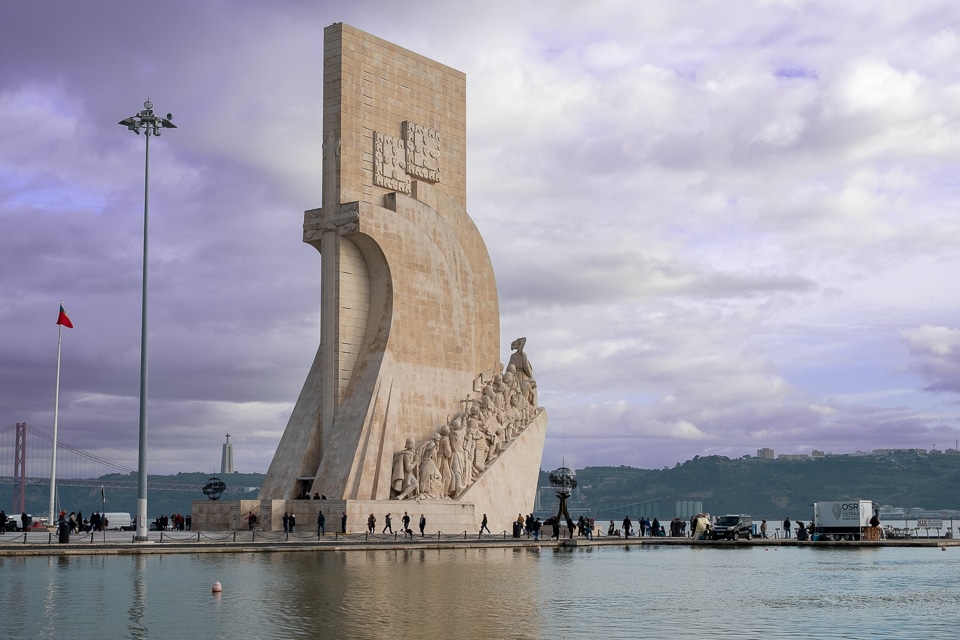
Lisbon
Don’t be fooled by your start in Lisbon. Portugal’s capital is a wonderful city and a great place to learn about the general history of the country. But it’s on the Tagua River, not the Douro!
Do take some extra time to arrive early and enjoy the markets, museums, and lifestyle of Lisbon. Viking will offer a cursory city tour with stops at Lisbon’s most popular landmarks, like the Belen Tower, San Jeronimo Monastery and the Navy Museum. An optional walking tour and food tasting is recommended.
We arrived a day early and toured most of these, as well as the National Museum of Azulejos (Tiles) and the Calouste Gulbenkium Museum on our own. Read our post, What to Do with Two Days in Lisbon, to plan your itinerary and pick up on a brief history of Lisbon, Portugal.
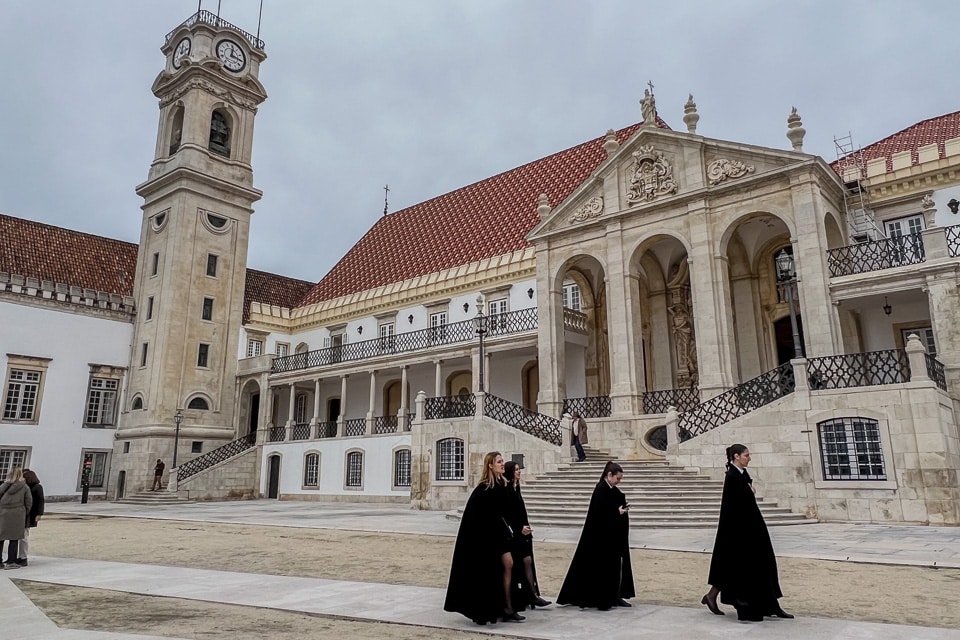
Coimbra
From Viking’s itinerary starting point in Lisbon, transferring by bus to Porto to embark, a stop in Coimbra is a popular included excursion. The University of Coimbra, one of the oldest universities in the world, was established here in 1537, though its roots date back to 1290 in Lisbon. The campus includes eight colleges and 25,000 students, many of whom don the black robes reminiscent of Hogwarts School in the Harry Potter series. The university was designated a UNESCO World Heritage Site.
Around a central court perched at the top of the campus hill are the Palace of John III and the cluster of Manueline-style buildings including the famous Coimbra library. (This architectural style, named for the first king of Portugal, Manuel, combines Moorish geometry and gothic details, and is often seen in Portugal’s churches, castles and municipal buildings.) Note, there are no photos allowed in the library, but the history, the fixtures, and the dusty old books leave a lasting impression. The palace does not admit visitors but is used for university events.
Following the campus tour, we were unexpectedly treated to a fado lunch at the student-run República da Saudade restaurant on the edge of town. The music was outstanding and the performers intent on acknowledging the fathers of fado music and its roots in Coimbra. Here the passionate fado is performed by men only, in the original style, though elsewhere in Portugal it is now performed by women, too.
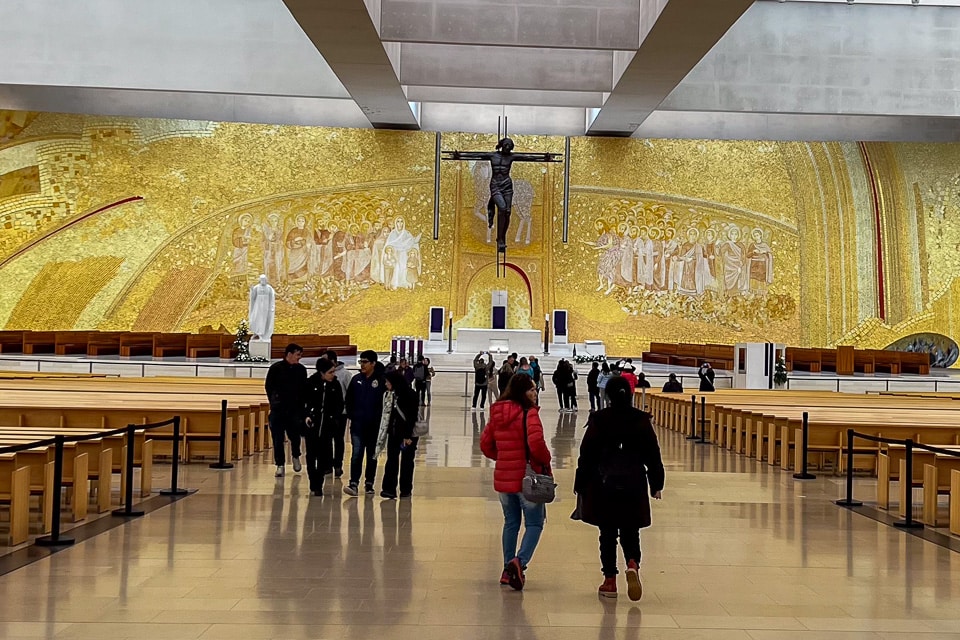
Fátima and Batalha
Instead of passing through Coimbra on the way to Porto, passengers can elect to visit Fatima and Batalha. Fátima, in central Portugal, is where the Virgin Mary appeared several times to three Portuguese children in 1917. A chapel was built on the site. It was later enclosed in a larger structure to protect it. Then eventually a much larger and modern church was constructed to accommodate the six to eight million pilgrims who visit Fátima annually. A huge contemporary crucifix adorns the modern basilica.
After his visit en route to Porto, Tom likened Fátima to a Catholic amusement park surrounded by shops. Get your Virgin Mary snow globe here, for example. Or, like most who visit, you can simply buy a candle and light it in remembrance of someone.
Nearby Batalha is home to a Dominican monastery, built in thanks for a 1385 battle victory over the Castilians. The late Gothic style mixed with Portugal’s Manueline style architecture has earned the monastery a listing with UNESCO World Hertiage Sites as a historic and cultural monument.
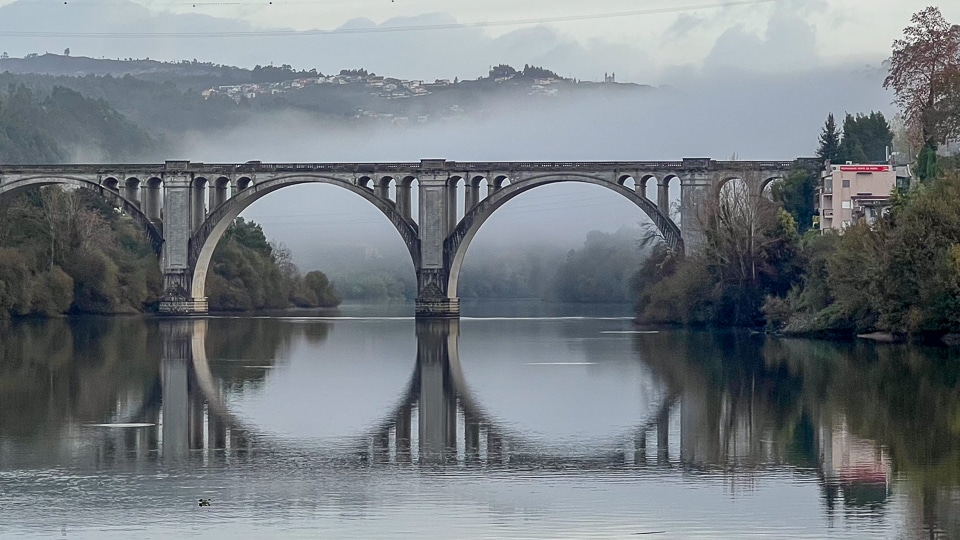
Entre-os-rios
For our sailing, Entr-os-Rios was an overnight port of call due to our wait for water flow to lessen. (It’s usually just a convenient bus loading area.) The bonus (always a silver lining) was a beautiful scene on the river early the next morning.)
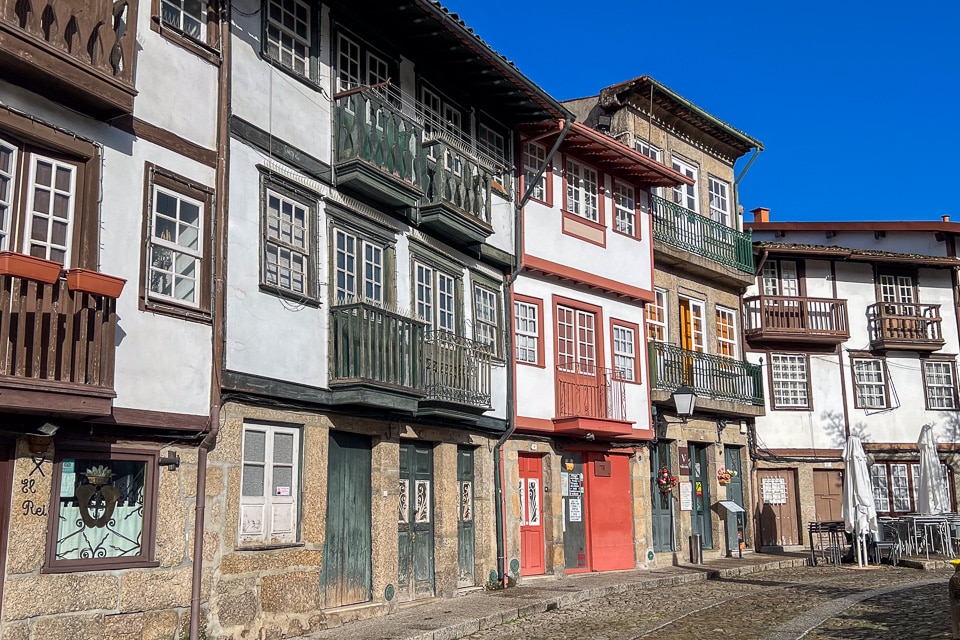
Guimarães
One of our favorite stops, though brief, was the city of Guimaraes, also recognized as a UNESCO World Heritage Site. (This city visit was converted from an optional to an included shore excursion on our sailing because of itinerary changes.) Highlights are the massive 10th Century castle atop a steep hill, the imposing French chateau-style Bragança Palace, and the churches and town square. It was disappointing that our walking tour didn’t include entry to any landmarks. But we did have some free time to roam this charming city and explore the narrow streets and inviting cafes and shops around the old city square.
Peso da Régua
Régua is a town right on the Douro River, so cruise passengers can easily disembark and walk about a bit. Peso de Régua, now with a population around 10,000, was originally a Roman town, and it’s river locale assured its importance even through the Middle Ages. In the last centuries, it’s been an integral station for the transport of wine and products down the Douro River. Take in the three tall bridges across the river valley, eat locally, watch the small boats and fishermen.
From Regua, Viking offers a shore excursion to the Mateus Palace and Gardens. It’s not where Mateus wine is made any longer, but a showpiece home and villa gardens.
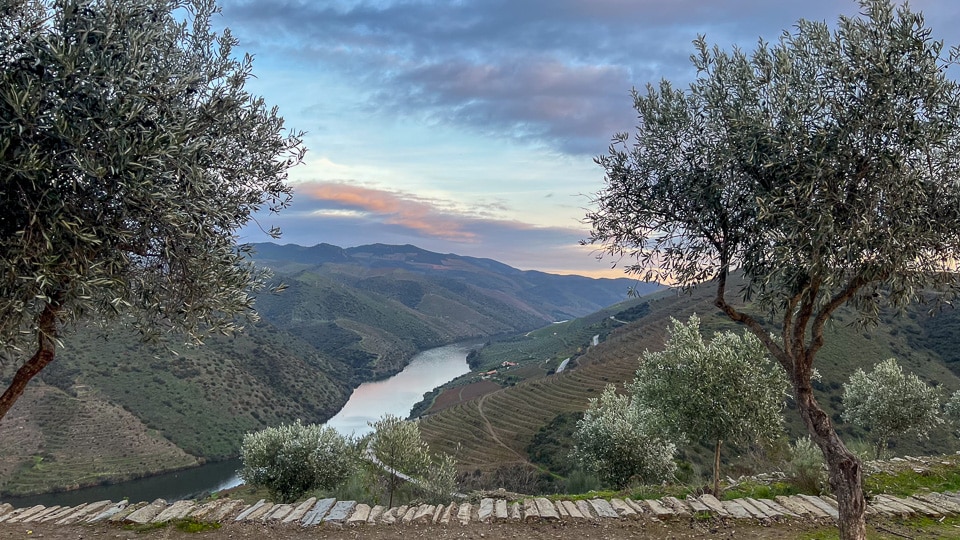
Coa Valley Museum
Ours was an unexpected and thrilling visit to this new museum (2010) which documents the discovery and protection of thousands of pieces of Upper Paleolithic rock art. Spread over some 80 sites across the Coa Valley, the prehistoric sites gained attention in the 1990s when Portugal was about to build dams in the area. UNESCO quickly adopted the sites, the dam project was halted, and the rocks are preserved in sito today.
If traveling on your own, you can schedule tours by kayak to visit the protected sites themselves. A museum visit has the advantage of telling the historic, artistic, archeological stories at once, in a museum renowned for its architecture and ongoing research and education. By the way, this area at the mouth of the Coa River involves two UNESCO Heritage Sites: both the Prehistoric Art of the Coa Valley and Douro Wine Landscape.
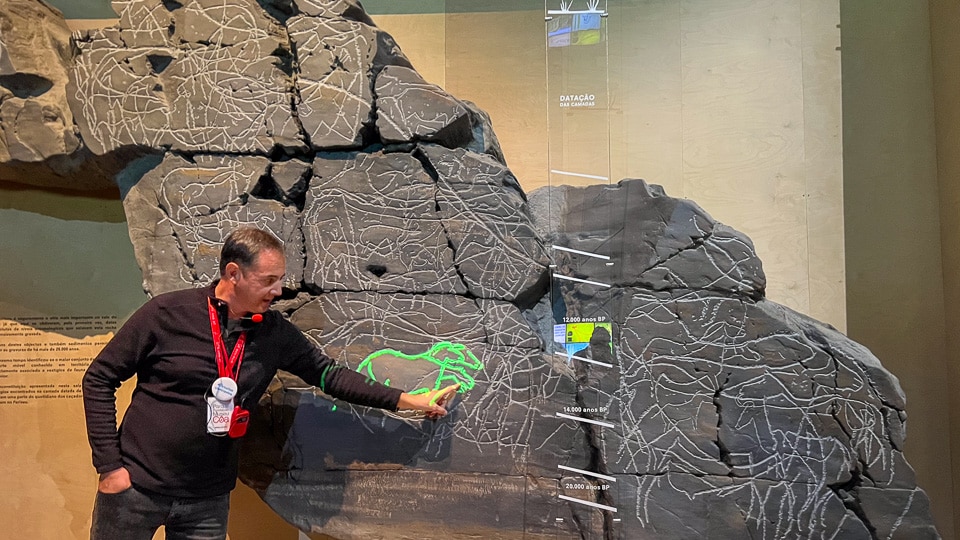
Pinhao
On the way back down river we stopped at this city at the convergence of Douro and Pinhao rivers, at the heart of the port wine making region. From here, your cruise will offer included and/or optional excursions to local makers of port and bread. Here Tom discovered the village of Favaios, known for Muscat (Moscatel de Favalos). It can be enjoyed either before or after meals. We have a bottle in waiting to decide which way we prefer.
In town, take time to visit the 1937 train station, decorated with scenes in Portugal’s typical blue and white azulejos (tiles). And if you’d like to venture off ship for a snack or meal, this is a great option, with various award-winning restaurants and wine bars nestled in the old warehouses along the train tracks.
Salamanca
Visiting this city in Northern Spain was a highlight for many of our fellow guests. Since we
d visited before, we took a day to enjoy the river and ship amenities. Check out our Travel Past 50 post about the impressive cathedrals of Salamanca.
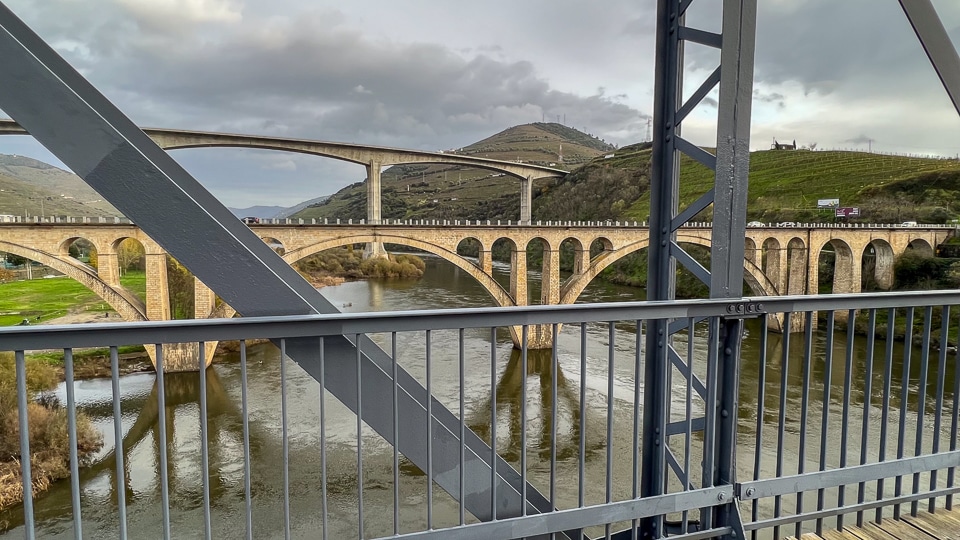
The Locks and Bridges
One of the on-ship evening presentations is a rough film about the wild Douro River of yesteryear. The shocking part, other than the poor quality of the film, is that the scenes are from the 1950s and 60s,but appear to be much older. That’s how physical the struggle was to navigate the rough waters in small boats thrown off balance by wine kegs.
Today, part of the appeal of this cruise is the engineering involved in the locks and dams and the new and old bridges traversing the Douro. I think we took more pictures of bridges than natural river scenes.
Follow your heart and feel free to skip a day ashore if you want to experience the lock systems. With luck, you’ll find, as we did, a pool of geeky passengers chatting with a super friendly and accessible captain who loves to share his expertise with the marveling crowd.
Porto and Gaia
In case you didn’t walk about Gaia near the ship during the embarkation evening, now’s the time to visit a port tasting room along the river just steps from the pier. Or, participate in a pre-arranged port dinner at one of the famous houses. Your ship’s reception desk is a great resource for making such plans on your own if you missed the Viking optional dinner.
Viking’s included excursions in Porto will offer walking or bus tours of the old city. Do consider the optional excursion to the Pinhais Cannery in Matosinhos, an old fishing village just next to Porto. Along the way you’ll see Porto’s best beaches, glimpse the town’s old streetcars, and see new public art and the ocean cruise port. (Porto, along with Lisbon, continues to improve its infrastructure in preparation for the 2030 World Cup co-hosted by Portugal, Spain, and Morocco.)
We recommend you add days to your trip to explore Porto on your own, and discover why Porto is such a popular city to visit. We happily stayed on a couple days and found great walking around town (discovering some streets marked with the Camino de Santiago shell insignia), wonderful meals and wine stops, and the fun, famous bookstore, Liveria Lello. Watch for our Porto post coming soon.
Viking Cruise Hospitality
We’ve been on a fair number of Viking river cruises (and one of their expedition cruises, too), as well as a few with other companies. We continue to be impressed by all the little touches that separate Viking from the rest. Their Portugal cruises are no exception. Viking deserves its repeated awards for best river cruise company. It sets the bar when it comes to benefits of small ship river cruising. The Viking touches we enjoy include:
- A daily newsletter. The Daily include the day’s itinerary and shore options, of course. It also provides historic and contemporary information about the ports and sites along the way.
- Dining. Given the smaller ship size, the restaurant options are more limited on the Douro ships than on other river cruises. But that doesn’t diminish the quality of the food. In our case, we were blessed with the masterful cuisine under the chef Mihail Mihaylov. From a small galley he and his crew produced excellent meals every day.
- On ship presentations. On top of the shore excursions, we were provided with helpful information about Portugal’s history, it’s current economic and political status, the Douro River, and the wine and port industry. We were treated to visiting musicians, too. All this in the comfort of the ship’s lounge.
- Local guides. From Lisbon to Porto and in the small towns in between, city walking tours are worthwhile and fun excursions, always led by local, licensed, tourism guides.
- All included. With the exception of premium beverages, everything is included on a Viking River Cruise, including wine with meals.
- Crew. We’re consistently impressed with the quality of Viking’s crew and staff. Per usual, the crew represented many countries from multiple continents. In Portugal, we were lucky to have a captain and program director from Portugal, the Porto area specifically, and we benefited from their recommendations for local restaurants. And their passion for the country of Portugal, even if it was sometimes at the expense of our dear Spain. Friendly rivalries abide.
Enjoy your Douro cruise.
Travel Planning Resources
Looking to book your next trip? Use these resources that are tried and tested by us.
Be sure to start with our Resources Page where we highlight all the great travel companies and products that we trust.
Travel Accessories: Check out our list of all the accessories we carry to make getting there and being there a lot easier.
Credit Cards: Find the best travel card for you at CardRatings.com.
Flights: Start finding the very best flight deals by subscribing to Thrifty Traveler.
Book your Hotel: Find the best prices on hotels with Booking.com.
Find Apartment Rentals: Find the cheapest prices on apartment rentals with VRBO.
Travel Insurance: Don’t leave home without it. We recommend Allianz Travel Insurance.
See all of the gear and books we like in one place on our Amazon shop.
Hey everyone! Wow, it’s May. The months are flying by so quickly. That’s what happens when life is good.…
Copyright © 2024 Retiring & Happy. All rights reserved.








